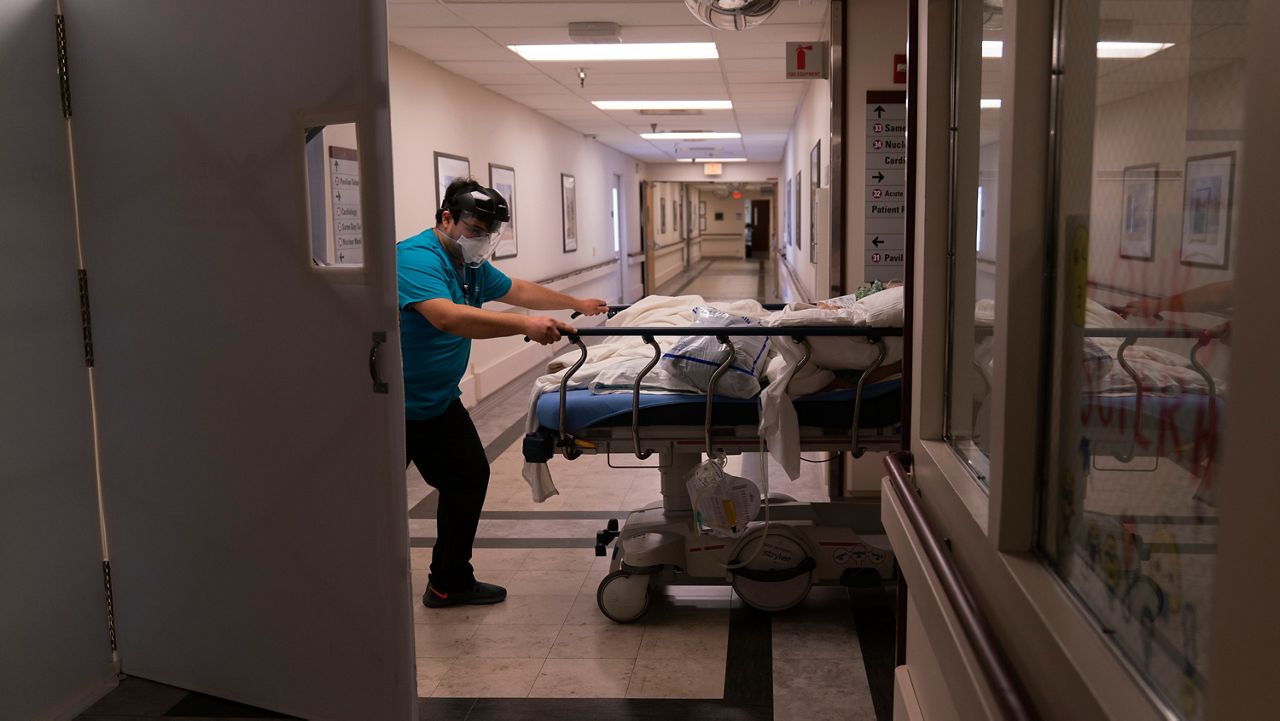SANTA ANA, Calif. (CNS) — Orange County’s hospitals continue to have more than 225 patients with COVID-19 amid rising infection rates, according to data released Tuesday by the Orange County Health Care Agency.
Patients hospitalized with COVID-19 stood at 227 as of Friday, with 30 of them in intensive care units, according to the most recent data available. That was an increase from 212 on Thursday and 32 in intensive care.
Officials cannot determine how many of the patients currently hospitalized were admitted directly for COVID-19 or tested positive while being treated for another ailment.
According to the county, 83.3% of the patients are unvaccinated and 87% of ICU patients are unvaccinated.
The county has 26.5% of its ICU beds available, above the 20% level when officials become concerned.
The county’s testing positivity rate increased from 15.3% as of last Monday to 15.8% as of Thursday, and ticked up from 14.6% to 15.7% in the health equity quartile, which measures the communities hardest hit by the pandemic.
The county’s daily case rate per 100,000 people is 31 on a seven-day average with a seven-day lag, and 30.6 for the adjusted rate, also with a seven-day average and seven-day lag.
Andrew Noymer, an epidemiologist and UC Irvine professor of population health and disease prevention, told City News Service Tuesday the trend is not encouraging.
“We’re still not moving in the right direction,” Noymer said. “Things are getting worse.”
He noted, however, that the level of hospitalizations is still less than the Delta variant-fueled surge last summer.
“We still need to keep things in perspective. We’ve seen much worse,” he said. “But I think it’s going to get worse. But my biggest concern remains next winter. It’s the winters that give us the big walloping.”
Last year, the Fourth of July did not fuel a surge, but this year may be different, Noymer said.
“This July, I wouldn’t rule it out because we’re dealing with such a more transmissible variant now,” Noymer said.
The rise in infections is “pretty substantial,” Noymer said.
“There’s a lot of COVID out there, but the fact we haven’t seen a substantial mortality is a good sign that things are working.”
The county logged 2,662 more infections Friday through Monday, raising the cumulative case count to 606,717. The county did not report any more fatalities, keeping the death toll at 7,126.
The OCHCA provides regular COVID updates on Tuesdays and Fridays.
The case rate per 100,000 people for fully vaccinated residents who have received a vaccine booster decreased from 35.8 June 19 to 30.1 June 26, the latest data available show. The case rate for residents fully vaccinated with no booster went from 21.5 on June 19 to 17.9 on June 26, and from 34.7 on June 19 to 30.1 on June 26.
The number of vaccines administered in Orange County increased from 2,324,587 to 2,326,588, according to last Tuesday’s data. That number includes an increase from 2,185,776 to 2,187,900 residents who have received the two- dose regimen of vaccines from Pfizer or Moderna.
An update on vaccines was not provided this Tuesday, but may come later this week.
Noymer encouraged anyone eligible for a booster shot to do so.
“I think everyone eligible for a third shot should have the third shot by now,” Noymer said.
For those eligible for a fourth shot, Noymer advised waiting for the fall. Authorities are expected to approve a booster designed to combat the Omicron variant soon, but anyone eligible for a booster now shouldn’t wait as they can also get the Omicron-variant dose later as well, Noymer said.
The number of residents receiving the one-dose Johnson & Johnson vaccine decreased from 138,811 to 138,688 as officials continue to adjust to a new accounting of shots administered in the counties across California.
Booster shots increased from 1,329,788 to 1,335,414.
In the age group of 5 to 11 years old, the number of children vaccinated increased from 92,210 to 92,483 versus 176,097 who have not been vaccinated.



